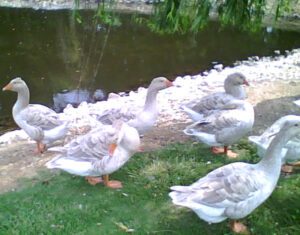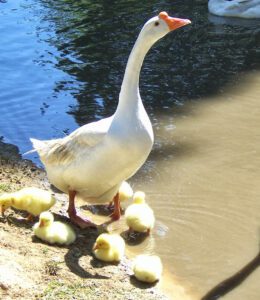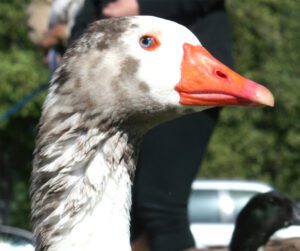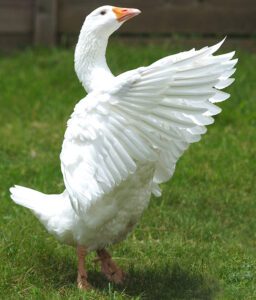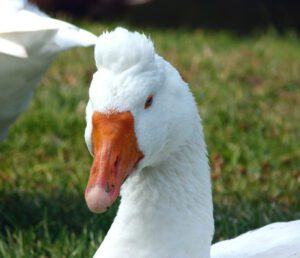The Toulouse goose is a very old domestic breed. It was developed in Haute Garonne, where the city of Toulouse is the region’s center in south-western France.
The name of Toulouse goose has been recorded back as far as 1555. Especially the original grey-colored breed is a very old one. Two types of Toulouse goose are recognized. A slightly lighter agricultural type without dewlaps.
And another type is a heavy industrial type with dewlaps. Both types are large in size and very heavy. The breed was first exported to England in the 1840s, and to America in the early 1850s.
It is the most popular commercial breed sold in America. They were admitted into the first American Standard of Perfection in 1874. Later the Toulouse goose breed was brought to North America, where it became popular in the upper Midwest due to its ability to withstand cold winters. Review characteristics, use, breed facts and full breed profile of Toulouse goose below.
Toulouse Goose Characteristics
The Toulouse is a heavy goose breed. They have massive, deep bodies with a large pendulous dewlap. Although a slightly lighter type available without dewlaps. The breed is recognized in Buff and Gray varieties, and they lack the knob of the African breed.
They have a deep keel which nearly touches the ground. Usually they carry themselves nearly horizontal. The Toulouse goose are known for their large square, broad bodies. The American Livestock Breeds Conservancy has divided the Toulouse goose into three sub groups. And the sub groups are Exhibition, Production and Standard Dewlap.
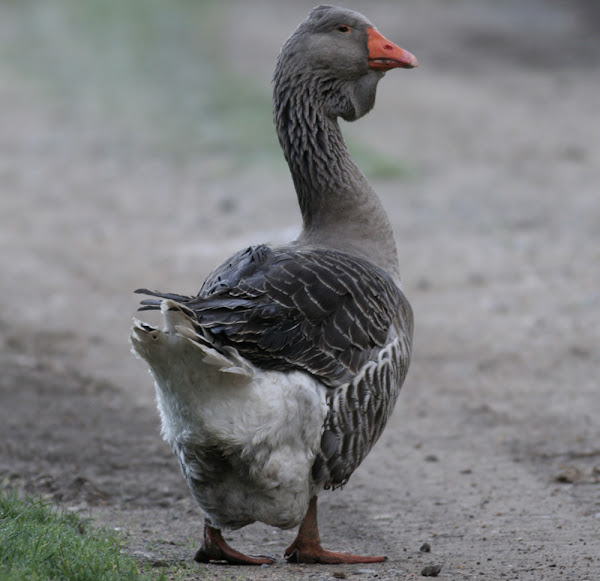
The Exhibition and Standard Dewlap types are the massive birds. And the Exhibition type have more exaggerated features. And the Production type is the slightly small gray goose usually sold by hatcheries. On average standard weight for Toulouse male is 9-9.5 kg and 7-8.5 kg for females. Photo from Wikipedia.
Uses
Toulouse goose breed is heavy in size and mainly used for meat production and also for exhibition. The breed is an important meat producer and with its oversized liver, a source of foie gras. And the fluffy feathers of this goose breed are a good source of down feather. The breed is poor layer and not suitable for egg production.
Breed Facts
Like the other heavy goose breeds, the Toulouse are typically docile. They are known for their large square, broad bodies and fast growth rate. They gain weight rapidly when there is an abundance of food and no or little room for exercise.
The geese with the dewlap variety lay 20-35 eggs per year. And the type without dewlaps lay 25-40 eggs per year. Their eggs are extra large in size and white in color. They are not good foragers. It is very very important that producing birds are not overweight during the breeding season.
But the birds need an adequate supply of concentrated feed with 18-22 percent crude protein during this period. Fertility is highest when birds get sufficient exercise, access to succulent green feeds, and water for swimming. Review full breed profile of this goose in the chart below.
| Breed Name | Toulouse |
| Other Name | French: Oie de Toulouse à bavette, French: Oie de Toulouse sans bavette |
| Breed Purpose | Meat |
| Special Notes | Docile, Friendly, Fast Growing |
| Breed Class | Heavy |
| Broodiness | Average |
| Weight | Average weight for Toulouse male is 9-9.5 kg and 7-8.5 kg for females |
| Climate Tolerance | All Climates |
| Egg Color | White |
| Egg Size | Extra Large |
| Egg Productivity | Poor (20-40 eggs per year) |
| Flying Ability | Poor |
| Rarity | Common |
| Varieties | Buff & Grey |
| Country of Origin | France |

